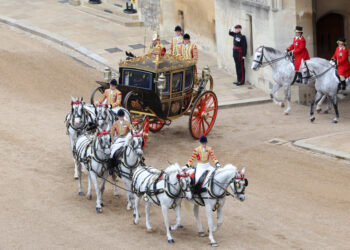Para leer el artículo en español, clicar aquí
 As the World Protocol Magazine Editorial Board, we take enormous pride in keeping this platform open to all experts from the numerous fields of business and protocol: Wilfredo Pérez Ruiz, from Peru is one of many who have taken the opportunity of working together with WPM.
As the World Protocol Magazine Editorial Board, we take enormous pride in keeping this platform open to all experts from the numerous fields of business and protocol: Wilfredo Pérez Ruiz, from Peru is one of many who have taken the opportunity of working together with WPM.
Mr Ruiz studied Business Administration at the Peruvian Institute of Business Administration and Administration and Management in International at the Columbia Educational Corporation, specalising in Political Science at the Inca Garcilaso de la Vega University and Protocol and Event Organization at the Frieda Holler Institute and at the Diplomatic Academy of Peru.
He is now professional in organization of events, corporate communication, protocol and social etiquette, member of the World Protocol Organisation and the Latin American Ceremonial Organization. He is the Director of the Peru-division at the Latin American Network of Event Organizers. Furthermore, he is a teacher at the San Ignacio de Loyola Institute, the ELA Secretariat Institute, the Mónica Chacón School of Modeling and Integral Image and The Style Institute. In this particular article, he explaines the rules to be followed when it comes to invitations of any kind.
 When preparing an event, the protocol of invitation is first and foremost aspect to be adhered to, regardless of the occasion. Now, I would like to present some of my professional experiences and reflections aiming to show you how to achieve the impeccable implementation of protocol invites. Most of us are usually flattered to be invited. It is an expression of respect, appreaciation, mutual friendship and certainly a great opportunity to strengthen interpersonal relations. As a guest you will be received in good faith and spirit if you consider the following tips.
When preparing an event, the protocol of invitation is first and foremost aspect to be adhered to, regardless of the occasion. Now, I would like to present some of my professional experiences and reflections aiming to show you how to achieve the impeccable implementation of protocol invites. Most of us are usually flattered to be invited. It is an expression of respect, appreaciation, mutual friendship and certainly a great opportunity to strengthen interpersonal relations. As a guest you will be received in good faith and spirit if you consider the following tips.
 In social context, you can share invitation by email or by calling over the phone to avoid formality. In our days, social networks are more and more frequented for this purpose. In my opinion though, printed invitations not only increase formality but may contribute to the positive reception by making the extra effort, adding personal touch to it rather then sending them electronically by email or by creating an event on social media.Everything of course, depends on the level and type of event and the circle of guests to be invited.
In social context, you can share invitation by email or by calling over the phone to avoid formality. In our days, social networks are more and more frequented for this purpose. In my opinion though, printed invitations not only increase formality but may contribute to the positive reception by making the extra effort, adding personal touch to it rather then sending them electronically by email or by creating an event on social media.Everything of course, depends on the level and type of event and the circle of guests to be invited.
At corporate level the relevant details are included in “business protocol”.
 In my view it is essential that the company event producers fully master these brushstrokes in order to offer appropriate guidance and advice to their contracting clients. I often observe mediocrities and faux pas at well-known companies of long market history and these mishaps just underline the significance of this issue. Unfortunately, the same mistakes are made at state level and at private companies, too, although their event, image, marketing or public relations team should prevent or eliminate all breaches of protocol that may cause event failure and in a larger context this may result in the ruining of the whole company-image.
In my view it is essential that the company event producers fully master these brushstrokes in order to offer appropriate guidance and advice to their contracting clients. I often observe mediocrities and faux pas at well-known companies of long market history and these mishaps just underline the significance of this issue. Unfortunately, the same mistakes are made at state level and at private companies, too, although their event, image, marketing or public relations team should prevent or eliminate all breaches of protocol that may cause event failure and in a larger context this may result in the ruining of the whole company-image.
Let’s start with the format and layout. Printed company invitation cards may have their logo in high relief white or gold dry stamp in the center.
Whether the text is handwritten or typed it is essential to clearly state the name, title, and rank of the inviting person, the courtesy line of invitation, then the occasion, together with the type of event, exact date, time and place (in that order).
 The layout, quality, design and colours applied should be in harmony with the level of the inviting and invited party. When holding an international event, invitations may be written in two or more languages that will be used as working languages of the event. Important guidance, like the event dress code should be also indicated – usually in the right bottom corner, and the R.S.V.P. information on the right,
The layout, quality, design and colours applied should be in harmony with the level of the inviting and invited party. When holding an international event, invitations may be written in two or more languages that will be used as working languages of the event. Important guidance, like the event dress code should be also indicated – usually in the right bottom corner, and the R.S.V.P. information on the right,
There is a limited number of event types that could be referred to both in diplomacy and in business.
These standing or seated occasions are: gala-breakfast, brunch, (standing) reception, cocktail party, gala dinner, buffet-lunch, buffet-dinner, garden-party or coup-de-champagne, vin d’honneur. Avoid any other fashionable names or adjectives in official context.
 It is common courtesy to reply to all invitations received. Not everyone knows the traditional French abbreviation “RSVP” (Réspondez, s’il vous plait – Please, reply). If you see this on your card, it simply means the inviting party is expecting a reply from you by phone or by email whether you can accept it or need to decline it. If you see “R.O.” or “Regrets only” you need to reply only if you cannot make it to the event, no reply automatically means acceptance of the invitation.
It is common courtesy to reply to all invitations received. Not everyone knows the traditional French abbreviation “RSVP” (Réspondez, s’il vous plait – Please, reply). If you see this on your card, it simply means the inviting party is expecting a reply from you by phone or by email whether you can accept it or need to decline it. If you see “R.O.” or “Regrets only” you need to reply only if you cannot make it to the event, no reply automatically means acceptance of the invitation.
Therefore, I highly advise to always indicate deadlines and contact details on the invitations and should you wish to restrict the access of those who have not been invited, it is worth specifying the invited party, e.g. “it is a non-transferable / personal invitation, please, present it at admission”.
It is also wise not to copy similar text you may find on the internet. Rest assured that they will contain abundant errors in format or textual content. Wedding invitations, university graduations, anniversaries, funerals, inaugurations, opening ceremonies among others have their own language style. Use sophisticated simplicity, originality and ensure impeccable texting. Avoid turning it into a bingo ballot or a raffle ticket enriched with ornaments, reliefs in all colors of the rainbow.
When the complementary information is rather long (location map, parking pass, entry points etc.), place an additional information card.
When registering the incoming replies I suggest creating and regularly updating an event database with names, positions and all relevant information of your guests. This way you won’t leave anybody out and miss any important detail your guests provided.
 The timeframe allowed between the actual invitation and the event itself is the first “thermometer” of the host.
The timeframe allowed between the actual invitation and the event itself is the first “thermometer” of the host.
The timeslot and the actual way of sending reflect, without ambiguity, the interest in the participant’s attendance. A late invitations is worse than no invitation: it shows poor judgement in planning or the organiser’s lack of care or even the host’s personal indifference. Furthermore, it may be a telling sign that the guest in question did not make it to the main list and was only added later. Formal invitations should be sent out at least 10 days but the sooner the better.
It is advisable to send out so caled “Save-the-Date” notes by email as soon as the time and place is finalised. Conferences, events of large number of participanst require several months of planning – therefore it is smart to let your audience / guests know about the dates so that they can save them in the calendar and expect the formal invitation later on.
This is especially valid when inviting dignitaries or other important personalities – the sooner they know about the event, the more likely they will be able to attend.
 Let me reitarate here our national guideline and what is stated in article 6 of the State Ceremonial and Regional Ceremonial of Peru (D.S. 096-2005-RE): “… The only national authority that can be represented in a ceremony or official act is the President of the Republic. His representation may fall on the person of a Vice President of the Republic who assumes his precedence”. This rule should never be neglected. In this regard, it is common phenomenon that delegates of expected public authorities often unjustifiably demand to take the seats strictly reserved for only the holder of the invitation.
Let me reitarate here our national guideline and what is stated in article 6 of the State Ceremonial and Regional Ceremonial of Peru (D.S. 096-2005-RE): “… The only national authority that can be represented in a ceremony or official act is the President of the Republic. His representation may fall on the person of a Vice President of the Republic who assumes his precedence”. This rule should never be neglected. In this regard, it is common phenomenon that delegates of expected public authorities often unjustifiably demand to take the seats strictly reserved for only the holder of the invitation.
Also, it is illustrative to cite article 14 of the aforementioned guideline: “In any official act or ceremony attended by the Head of State or the Vice President on their behalf, the host will occupy the second place of precedence. In the event that a personality of higher precedence than the host is also present, the host will be placed in the third place of precedence”. An excellent host is always aware of the precedents in order to avoid uncomfortable situations. When public and private entities mix, depending on the circumstance, the so called “combed protocol” is applied meaning official and business protocol aspects are both considered.
As for the term “protocol” try not to over use it more than is necessary. I often hear junior hosts, event amateurs and even clueless masters of ceremony say: “protocol invitation”, “protocol photo”, “protocol programme”, “protocol speech”, “protocol staff”, “protocol toast”, among other absurdities. Please, as host / hostess, avoid frequenting this term and use flawless language with elegant expressions.
Experience confirms, although it may reflect immodesty, that protocol tasks must be placed in capable hands of experts. It is vital to teach and train the new generations of the future.
As for the success of the events: it is the host/hostess, I reiterate, who is responsible for what happens there. Any inappropriate behaviour demonstrated by guests may compromise the success of the event and the hosts themselves.
Please, allow me to close my article with a quote from a French writer, lawyer and politician of the18th century, Anthelme Brillat-Savarín: “To coexist is to assume responsibility for the well-being of the guest during the time he is under our roof.”




